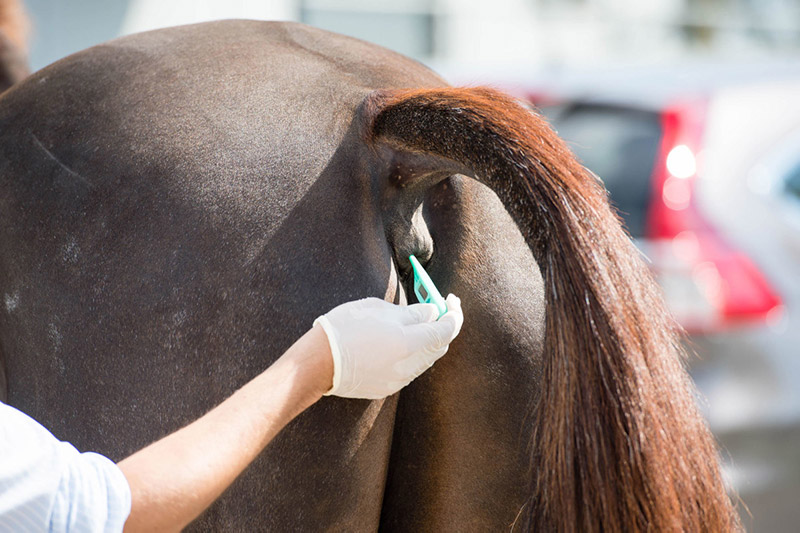Section 1 | Respiratory Diseases in Horses: Streptococcus equi
Industry
Page 04 /
Identifying Clinical Signs of Strangles
The focus of this FAAST Review is to discuss:
- How Strangles pathogens are spread
- The different treatment options available
- Best practices to prevent Strangles from occurring
While Strangles is not the only bacterial infection of adult horses, it represents a significant cause for antimicrobial use, and is a concern because of its highly contagious nature. With the frequency of movement in Canada’s equine herd, the prevention of Strangles is important not only for health, but for improved health and reduced antimicrobial use.
Streptococcus equi
Streptococcus equi infection in horses is commonly referred to as “Strangles”. This is a highly contagious condition that can cause significant levels of disease in a susceptible population.
Clinical Signs of Streptococcus equi
Infection is characterized by the abrupt onset of several clinical signs, such as1:
- Fever, where temperature is >38.5°C or >101.3°F (often the first clinical sign that presents)
- Nasal discharge
- Depression and anorexia
- Swelling of lymph nodes (part of the body’s infection-fighting system) primarily around the head and neck

Source: The Horse.com
Swelling in the Lymph Nodes
Swelling in these areas of the body can result in abscesses (a collection of pus). When the lymph nodes of the head and neck are affected, these abscesses can cause the horse to have difficulty swallowing, make noise when inhaling, and cause them to frequently extend their head and neck.
In some cases, horses can develop metastatic strangles, also known as “bastard Strangles”. This occurs when abscesses form in other lymph nodes of the body, such as within the abdomen and chest, which can cause additional complications and more severe disease.
Age Matters
Strangles is typically more severe in younger horses. While older animals can still become infected, they tend to recover more quickly and present with more mild clinical symptoms than younger horses.
Diagnosis of Disease
Strangles is most commonly diagnosed by taking samples (swabs of the nose and throat, washes of the nose and throat, or through taking a sample of pus from abscesses) from the horse. These samples may be cultured to grow and identify any bacteria that are present. These samples may also be sent to the laboratory for specialized testing to identify the bacterial flora present.

Source: EquiManagement
If you think your horse may have Strangles, contact your veterinarian to help you diagnose and treat the disease, and develop a plant to prevent spread through your barn
References:
- Sweeney, C.R., J.F. Timoney, J.R. Newton, and M.T. Hines. 2005. Streptococcus equi infections in horses: Guidelines for treatment, control, and prevention of strangles. J Vet Intern Med. 19:123-134.
